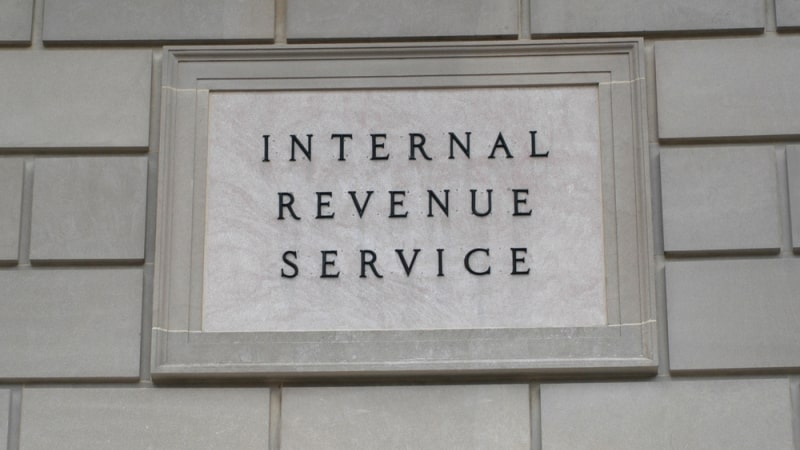
Technology modernization is critical to the IRS’ plan to improve customer service with the nearly $80 billion from the Inflation Reduction Act passed last year, according to the strategy the tax agency released on Thursday.
The IRS Inflation Reduction Act Strategic Operating Plan – a 10-year plan which includes more than 190 discrete projects and over 200 specific milestones – outlines how the agency aims to improve services, like delivering cutting-edge technology to operate more effectively.
“To enable improved taxpayer services and compliance, we must deliver technology capabilities at a faster pace and bigger scale than we have achieved before,” the plan states.
Overall, the IRS plans to invest in new technology and build on contemporary foundational platforms with modern architectures designed to meet the agency’s future needs. According to the plan, this will require careful coordination between delivering new capabilities and modernizing or retiring legacy platforms.
In addition, the tax agency plans to shift to an IT delivery model that integrates business unit perspectives to deliver faster and better results to improve services to taxpayers.
The strategy also outlined how it plans to ensure the privacy and security of taxpayer data.
“We will enhance our use of data and analytics to drive operations and decision-making. Improved data analytics will better position us to optimize operations for taxpayers and employees alike,” the plan states.
The new strategy also includes details on how it plans to allocate the $80 billion, from the Inflation Reduction Act, among different priorities. Business systems modernization will get an estimated $4.8 billion, $3.2 billion for taxpayer services, and $25.3 billion for operations support. However, the plan notes that this might not cover all the costs associated with the customer service and tech modernization goals.
IRS Commissioner Daniel Werfel urged Congress not to cut IRS annual funding with the assumption that the agency can dip into the Inflation Reduction Act funding to cover the difference.
“Any reduction in annual discretionary funds… will require funding to be shifted to general operations,” Werfel wrote in a letter to Treasury Department Secretary Janet Yellen, included in the plan. “This would be to the detriment of the service, technology, and compliance initiatives envisioned to transform the IRS.”
Expand Digital Services, Digitalization
In the first five years of the 10-year plan, the IRS aims for taxpayers to be able to securely file documents and respond to notices online and securely access and download their data and account history. The tax agency also plans to improve online accounts with features like updated status tracking tools so users can receive refund and return processing updates.
The IRS also wants to rid itself of paper backlogs. It aims to eliminate paper backlogs by digitizing any paper forms and returns when it gets them and moving to “fully digital correspondence processes.”
Key projects in this area include:
- Creating digital forms so they are easier to use, mobile-friendly, and take advantage of digital capabilities and interactive features that paper forms lack;
- Digitalize paper-submitted forms, returns, applications, certifications, correspondence, or remittances at the point of receipt;
- Enable digital data delivery throughout the IRS;
- Implement necessary data storage requirements and best practices to retain the proof of receipt and senders’ identities;
- Create viewable digitized data;
- Enable and implement digital processing; and
- Evaluate which taxpayers are most burdened during filing and remove barriers to electronic filing.
Retiring Legacy Applications, Adopting Modern Systems
Many initiatives in the IRS’ plan depend upon the agency’s modernization of its core IT infrastructure, which now includes some of the oldest information systems in the Federal government. The funding will allow the IRS to design and deliver modern technology platforms centered around data and applications, with natively integrated protective and detective security controls.
“We will retire outdated systems and adopt new technology to improve customer experience and data-driven enforcement, and we will increase the productivity and efficacy of IRS employees,” the plan notes.
In addition to retiring legacy applications, adopting modern systems, and modernizing IT Infrastructure, the plan also outlines how the IRS will consolidate and improve access to and use of data with data privacy and security as a top priority.
“Decision-making based on data will be the core of our approach to fundamentally shift how we manage operations and deliver services to taxpayers,” the plan states.
Key initiatives in this area include:
- Modernize systems used to access and process taxpayer data;
- Accelerate technology delivery;
- Enhance core technology processes and platforms to support the delivery of expanded capabilities for taxpayers and employees;
- Continue to ensure data security;
- Improve data storage and management to support improved taxpayer services and enforcement;
- Apply enhanced data analytics capabilities to improve tax administration; and
- Engage with external partners to develop new insights to generate value for taxpayers and policymakers.
